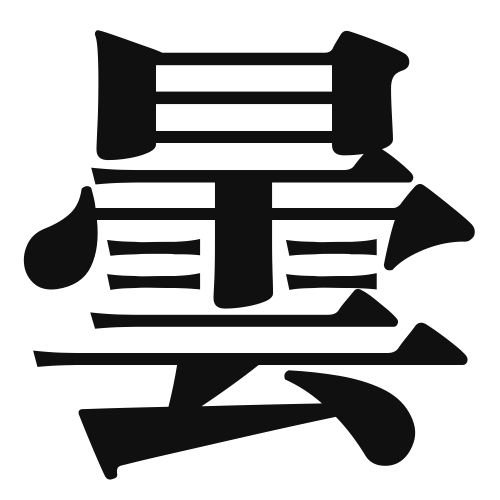1. Overview of Meaning
The kanji “曇” (kumo) means “cloudy” or “overcast.” It describes weather conditions when the sky is covered with clouds, blocking sunlight.
2. Formation and Radical
Formation of the Kanji: The kanji “曇” is a phonetic-ideographic character (形声文字). It combines the radical for “sun” (日) and a phonetic component that suggests the sound “don.” This reflects the idea of clouds obscuring the sun.
Radical: The radical for “曇” is 日 (sun), which is commonly associated with light and brightness, contrasting with the meaning of the kanji itself.
3. Examples of Usage
Common Words and Phrases:
- 曇り (くもり, kumori) – cloudy weather
- 曇天 (どんてん, donten) – overcast sky
Example Sentences in Daily Conversation:
- 今日は曇りです。 (きょうはくもりです。) – It is cloudy today.
- 明日は曇りの予報です。 (あしたはくもりのよほうです。) – The forecast says it will be cloudy tomorrow.
4. Synonyms and Antonyms
Similar Kanji:
- 雲 (うん, un) – cloud; refers to the actual cloud itself, while “曇” describes the state of being cloudy.
Antonyms:
- 晴 (はれ, hare) – clear or sunny; represents the opposite of cloudy weather.
5. Cultural and Historical Background
Relation to Japanese Culture: In Japan, weather plays a significant role in daily life and cultural practices. The concept of “曇” is often associated with the changing seasons and is reflected in traditional poetry and art.
Proverbs and Idioms:
- 曇りのち晴れ (くもりのちはれ, kumori no chi hare) – cloudy then clear; used to express that difficult times will eventually pass and give way to better days.
